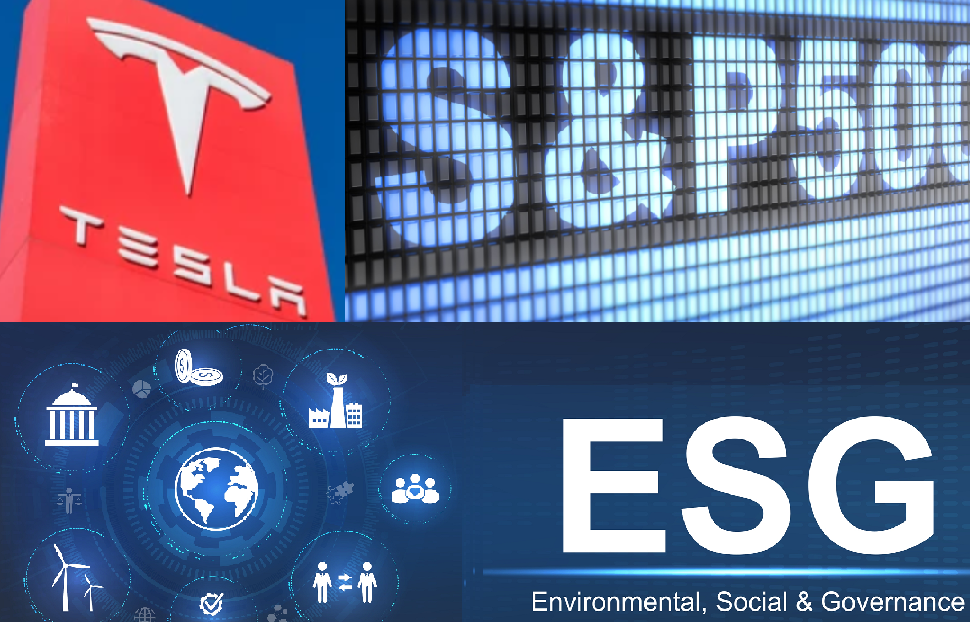In the ever-evolving landscape of finance and investing, a concept is gaining traction within the realm of the S&P 500 that promises not only financial returns but also a positive impact on the planet and society at large. Enter Environmental, Social, and Governance (ESG) investing, a framework that evaluates companies based on their environmental practices, social impact, and corporate governance. While the S&P 500 is widely known as a benchmark for traditional market performance, a lesser-known narrative is brewing within its depths—the rise of S&P 500 ESG.

The ESG Revolution
Historically, the S&P 500 has been associated with traditional investment metrics, focusing primarily on financial performance and shareholder value. However, the tides have shifted as investors increasingly recognize that sustainable practices and responsible corporate behavior are not just ethical considerations but also potential drivers of long-term success.
ESG investing introduces a holistic approach that evaluates companies’ contributions to environmental preservation, social welfare, and ethical governance. As this trend gains momentum, companies that prioritize ESG factors are positioned to thrive in an era where investors seek alignment with values and impact alongside financial returns.
S&P 500 ESG: A Paradigm Shift
While ESG investing has traditionally been considered separate from mainstream benchmarks like the S&P 500, recent developments suggest a convergence of these two worlds. The introduction of S&P 500 ESG indices reflects an acknowledgment that sustainable practices are not niche concerns but integral to the long-term stability and growth of companies.
These indices track companies within the S&P 500 that meet specific ESG criteria, providing investors with a means to align their portfolios with sustainability goals. The criteria encompass aspects such as carbon footprint, diversity and inclusion, executive compensation practices, and more. Companies that meet these standards gain entry to the S&P 500 ESG index, which serves as a compass for investors seeking a balance between financial growth and responsible practices.
Impact Beyond Returns
The emergence of S&P 500 ESG indices carries implications beyond financial returns. It signifies a recognition that companies with strong ESG profiles are better equipped to navigate challenges, build resilient supply chains, attract talent, and maintain stakeholder trust. As investors allocate capital towards sustainable companies, the message sent is clear—profitability and ethical responsibility are not mutually exclusive.
Moreover, S&P 500 ESG indices empower investors to influence corporate behavior. By favoring companies that prioritize sustainability, investors wield their financial clout to incentivize positive change. This dynamic underscores the transformative potential of S&P 500 ESG as a force for sustainable progress.
Challenges and Considerations
While the concept of S&P 500 ESG is promising, it’s not without challenges. Defining uniform ESG criteria, ensuring accurate data reporting, and measuring impact accurately are complex tasks. The subjectivity inherent in ESG evaluations requires careful consideration to avoid greenwashing, where companies exaggerate their environmental and social efforts for marketing purposes.
A New Chapter in Investing
As S&P 500 ESG gains traction, it ushers in a new era where financial growth converges with responsible practices. This narrative highlights the evolving role of corporations and investors in shaping a sustainable future. As S&P 500 ESG indices continue to make their mark, the financial world witnesses a profound shift—one where the pursuit of profit aligns harmoniously with the pursuit of purpose. In an era where impact is as crucial as income, S&P 500 ESG charts a course towards investing that is not only financially rewarding but ethically resonant.
Fun facts about the S&P 500:
- Not Exactly 500 Companies: Despite its name, the S&P 500 index does not always consist of exactly 500 companies. The number can vary due to mergers, acquisitions, and other corporate actions. As of my last knowledge update in September 2021, the index may contain more or fewer than 500 companies at any given time.
- Economic Indicator: The S&P 500 is often considered a barometer of the overall health of the U.S. stock market and, by extension, the U.S. economy. Analysts and investors often look to its performance as an indicator of broader market trends.
- Tech Dominance: In recent years, the S&P 500 has been significantly influenced by technology companies. Tech giants like Apple, Amazon, Microsoft, Facebook (now Meta), and Alphabet (Google) have played a pivotal role in the index’s performance and fluctuations.
- Market Capitalization-Weighted: The S&P 500 is a market capitalization-weighted index, which means that companies with larger market capitalizations have a greater impact on the index’s movement. This approach differs from an equal-weighted index, where all companies have the same influence.
- Longevity: The S&P 500 has a rich history, dating back to 1926 when it was first introduced. It has weathered numerous market cycles, economic changes, and global events, making it one of the most enduring and respected stock market benchmarks.
- Selective Inclusion: The S&P 500 is not simply a collection of the largest 500 companies by market capitalization. A committee at S&P Dow Jones Indices, which oversees the index, evaluates various factors before including a company. These factors include market capitalization, liquidity, sector representation, and more.
- Financials and Technology: Historically, the S&P 500 has been dominated by companies from the financial and technology sectors. These sectors often have a significant influence on the index’s performance due to their market capitalizations and economic importance.
- Dividend Aristocrats: The S&P 500 includes a subset of companies known as the “Dividend Aristocrats.” These are companies that have consistently increased their dividends for at least 25 consecutive years. Being a Dividend Aristocrat is a mark of financial stability and consistent performance.
- Global Impact: While the S&P 500 represents U.S. companies, its performance has a ripple effect on global financial markets. Its movements can influence investor sentiment and trading activity around the world.
- Index Funds and ETFs: The S&P 500 is a popular choice for index funds and exchange-traded funds (ETFs). Many investors opt for these funds as a way to gain exposure to a broad range of large-cap U.S. stocks in a single investment.

